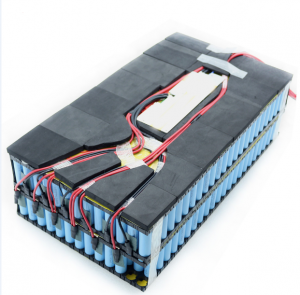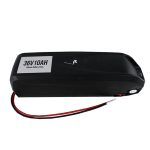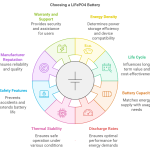How long do lithium batteries last?
What battery do I need?
What else do I need to buy?
Switching to a LiFePO4 battery can seem like a daunting task at first, but it doesn’t have to be! Whether you’re a battery novice excited to make the switch to lithium or a tech guru who’s trying to figure out how much power you’ll need, ALL IN ONE has the answers you seek!
We want to make it easy for you to better understand LiFePO4 batteries. That's why we've compiled a list of questions we get asked all the time.
1) How long will my ALL IN ONE lithium battery last?
Battery life is measured in life cycles and ALL IN ONE LiFePO4 batteries are typically rated to deliver 3,500 cycles at 100% depth of discharge (DOD). Actual life expectancy is dependent on several variables based on your specific application. If used for the same application, a LiFePO4 battery can last up to 10X longer than a lead-acid battery.
2) I want to upgrade to lithium iron phosphate batteries. What do I need to know?
As with any battery replacement, you need to consider your capacity, power, and size requirements, as well as making sure you have the right charger. Keep in mind, when upgrading from lead-acid to LiFePO4, you may be able to downsize your battery (in some cases up to 50%) and keep the same runtime. Most existing charging sources are compatible with our lithium iron phosphate batteries. Please contact ALL IN ONE technical support if you need assistance with your upgrade and they will be happy to make sure you pick the right battery.
3) What's DOD mean and how deep can a lithium iron phosphate battery be discharged?
DOD stands for depth of discharge. When a battery is discharged, the amount of energy taken out will determine the depth at which it was discharged. LiFePO4 batteries can be discharged up to 100% without risk of damage. Make sure you charge your battery immediately after discharge. We recommend discharging be limited to 80-90% depth DOD to avoid the BMS disconnecting the battery.
4) Can I use my existing lead-acid battery charger (Wet, AGM or Gel) to charge ALL IN ONE lithium iron phosphate batteries?
Most likely, yes. Our lithium batteries are very charger-friendly. Most chargers today have a lithium charge profile, which is what we recommend using. AGM or gel charge profile chargers will work with our batteries. We do not recommend the use of a flooded charge profile with our batteries. These chargers may reach the over voltage protection limit and disconnect. It won’t damage the battery but will likely result in charger faults.
5) Can I use my alternator to charge my lithium iron phosphate batteries?
ALL IN ONE batteries can be charged with most alternators. Depending on the quality of the alternator, it should work with LiFePO4 batteries. Low quality alternators with poor voltage regulation can cause the BMS to disconnect LiFePO4 batteries. If the BMS disconnects the batteries, the alternator could be damaged. To protect your LiFePO4 battery and alternator please be sure to use a compatible high-quality alternator or install a voltage regulator. Please Contact ALL IN ONE technical support if you need assistance.
6) What is a BMS? What does it do and where is it located?
BMS stands for Battery Management System. The BMS protects the cells from getting damaged — most commonly from over or under-voltage, over current, high temperature or external short-circuiting. The BMS will shut off the battery to protect the cells from unsafe operating conditions. ALL IN ONE batteries have a built-in BMS to manage and protect them against these types of issues.



